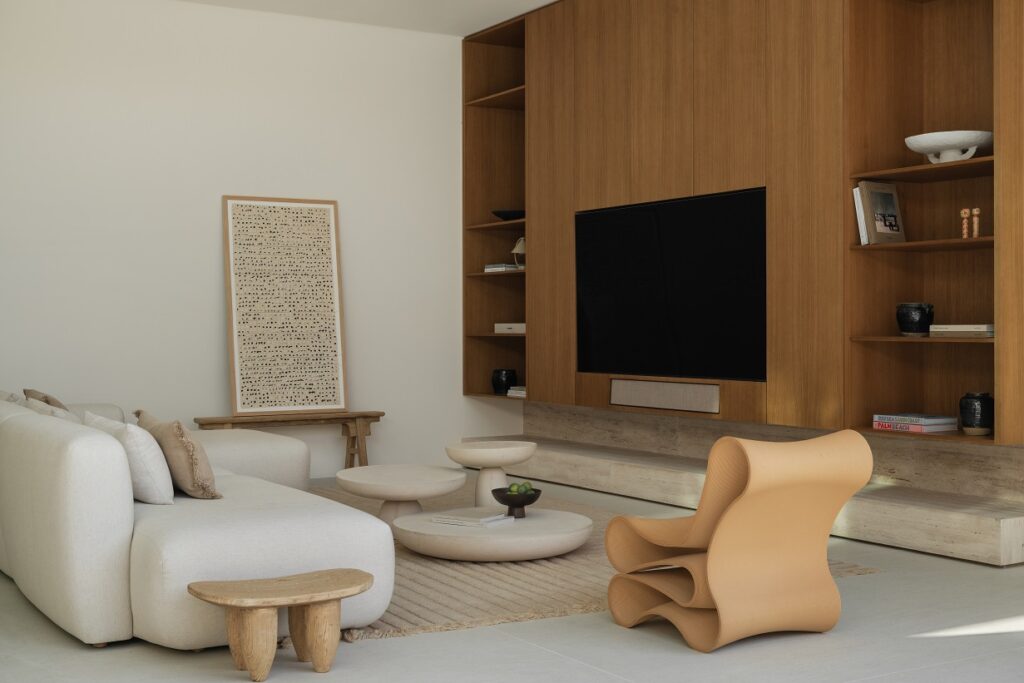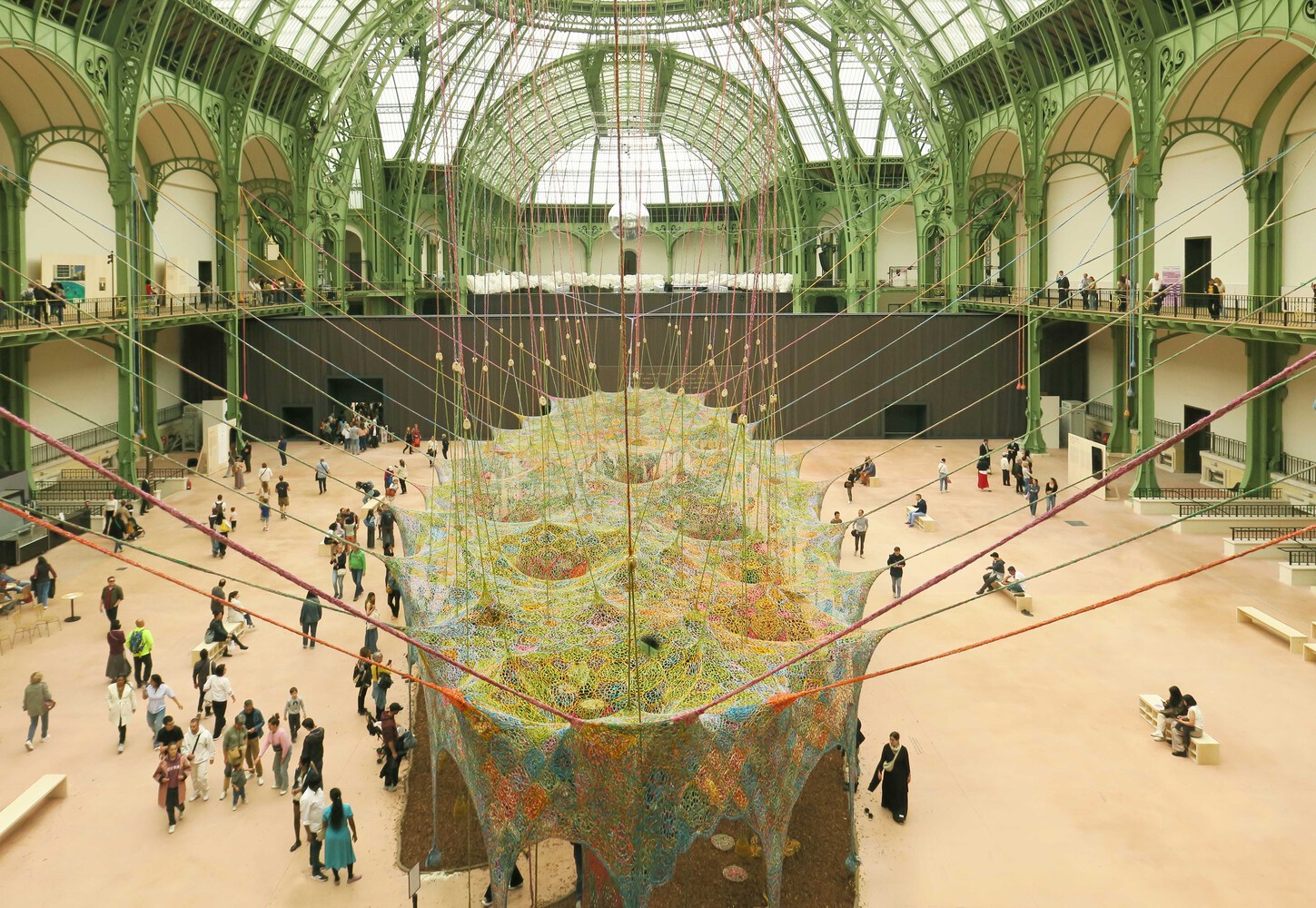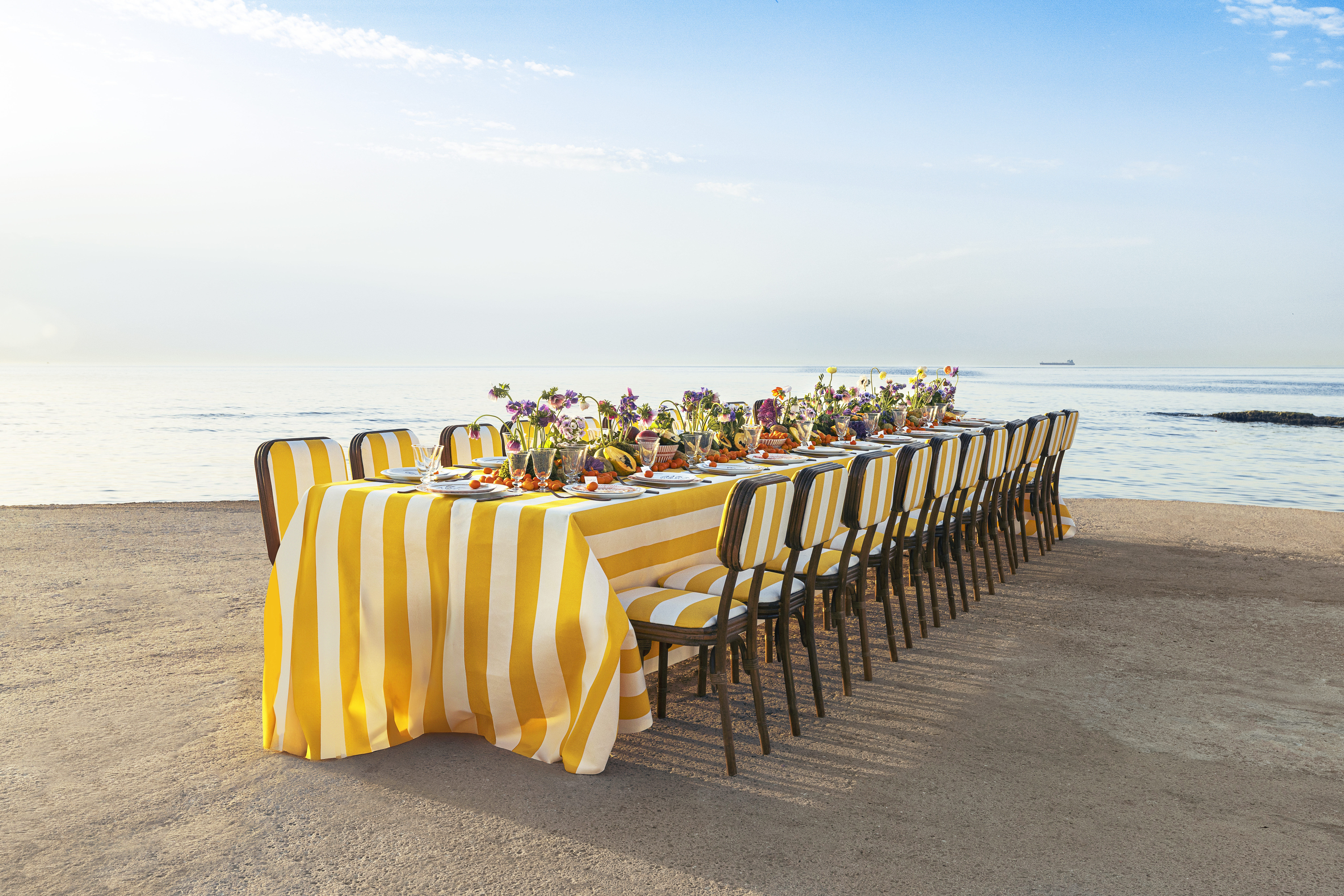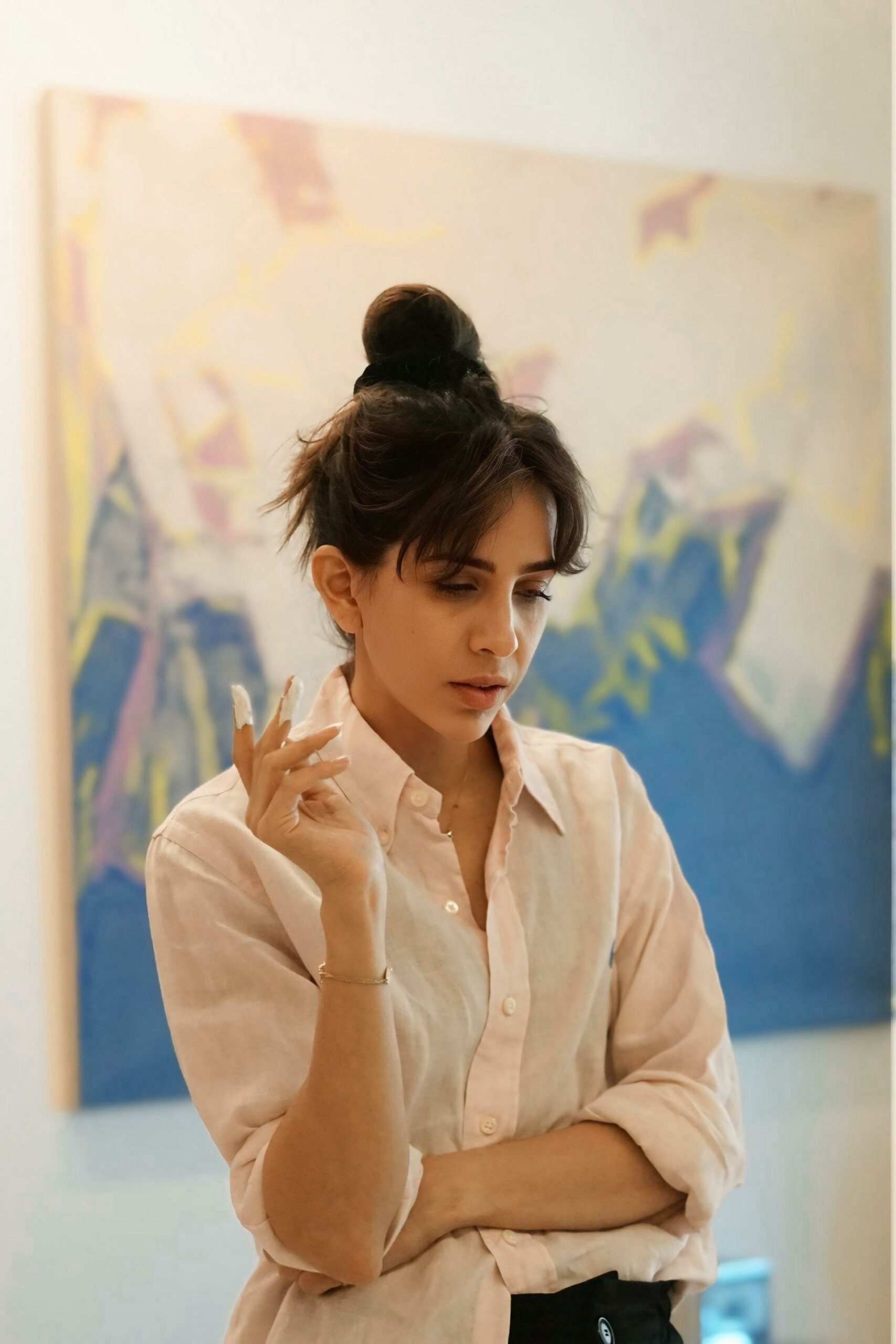Words By Allegra Salvadori | Photography By Natelee Cocks
Sophie Ananian’s design for this villa in Dubai is a sophisticated confluence of minimalism, natural materials, and cultural symbolism. Drawing deeply from Japanese aesthetics and Palestinian heritage, the project merges Eastern and Middle Eastern design principles, resulting in a space that resonates with both tranquillity and cultural depth. “By embracing the principles of Japanese aesthetics—minimalism, harmony, and a profound connection to nature—we sought to craft an environment that is both serene and refined,” the French interior designer explains.

The villa’s core is defined by a Japanese-inspired room, featuring a wall covering by CMO Paris Textile Studio, purchased at Maison Aimée, a natural wood table, and zabuton cushions, all of which embody the Japanese ideals of simplicity and meditative calm. The design’s colour palette revolves around neutral tones, enriched by soft textures from Élitis wallpaper. “We selected a palette of soft earth tones, warm woods, and subtle textures with wallpaper from Élitis to reflect the understated elegance of Japanese interiors“.
“The interplay of natural light and shadow was also carefully considered, enhancing the villa’s meditative quality and reinforcing this nature’s connection” Ananian notes. Natural materials such as travertine and wood were chosen with an eye toward celebrating the beauty of imperfection. “Working with natural material is a privilege and a responsibility, especially in a minimalist setting where every detail matters. Our approach focuses on honouring the inherent beauty of these materials by allowing their textures, tones, and imperfections to take centre stage”, the French designer remarks. This philosophy permeates the entire villa, where each surface is celebrated for its authenticity and individuality.
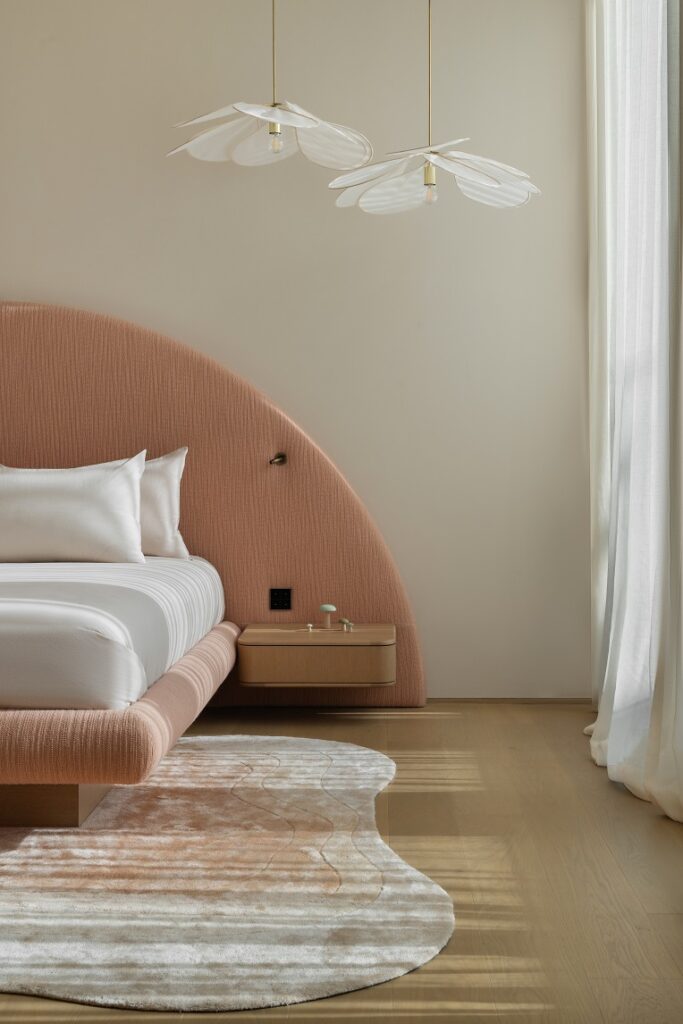
The challenge of balancing minimalism with the complexity of these materials was a delicate one. “While the design appears effortless, it is far from simple,” Ananian explains. “It requires an intimate understanding of material behaviour, precision in execution, and a thoughtful curation of details. Minimalism is not about the absence of detail but about the presence of the right details”. The villa emphasizes expansive ceilings and open spaces yet maintains a carefully curated sense of continuity.
Minimalism is not about the absence of detail but about the presence of the right details.
The designer’s approach was to maintain a coherent design language—using harmonious tones, clean lines, and a restrained palette—to ensure that while each room carries its own identity, the space as a whole feel unified and fluid. Lighting is another critical element in the design, particularly the use of Bocci pendant lights. “Bocci’s organic forms are a perfect complement to the minimalist ethos of the villa. Their fluidity and artistic presence contrast beautifully with the clean, architectural lines of the space,” the designer says, adding that these lighting elements enhance the villa’s sensory experience, casting soft, diffused light that accentuates the richness of the materials and the serene atmosphere of the home.
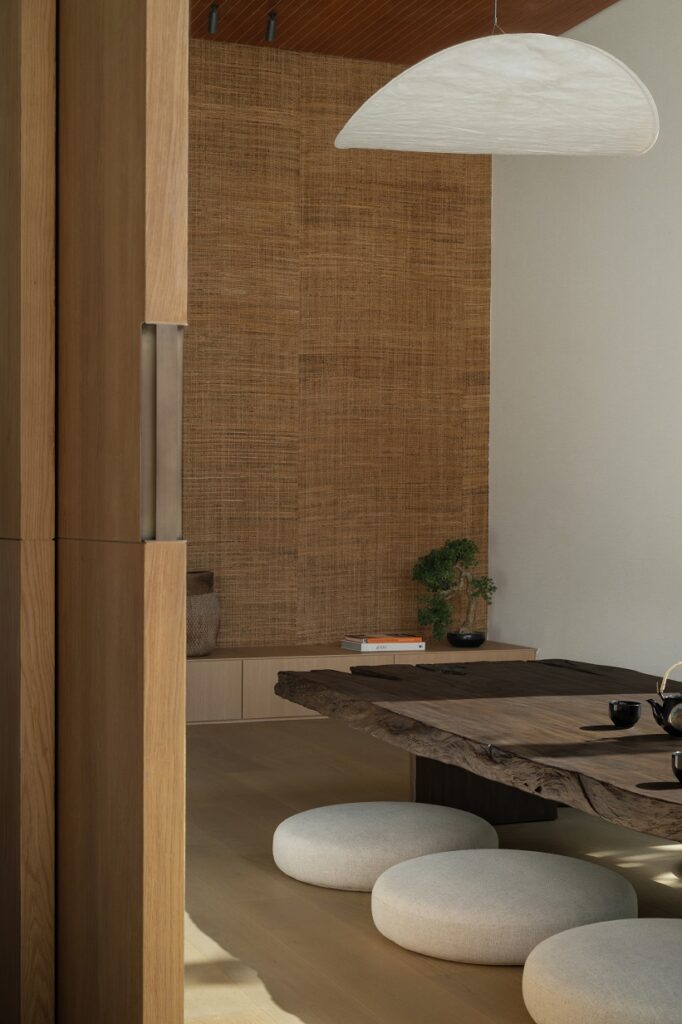
The placement of the grand piano in the formal living room was also a careful consideration: “The positioning of the piano was thoughtfully considered to ensure optimal sound projection without overwhelming the space” Ananian explains. The high ceilings and expansive volumes amplify the music, enriching the overall atmosphere. Perhaps the most poignant symbol within the villa is the olive tree at the entrance, which serves as a cultural anchor.
Symbolizing Palestinian heritage, the olive tree holds profound cultural and historical significance, representing resilience, peace, and a deep connection to the land.
“Symbolizing Palestinian heritage, the olive tree holds profound cultural and historical significance, representing resilience, peace, and a deep connection to the land”, the designer tells Marie Claire Maison. And she adds: “Its organic form and textured trunk introduce a sculptural quality to the space, while its soft, muted green tones blend effortlessly with the villa’s natural, neutral palette”.
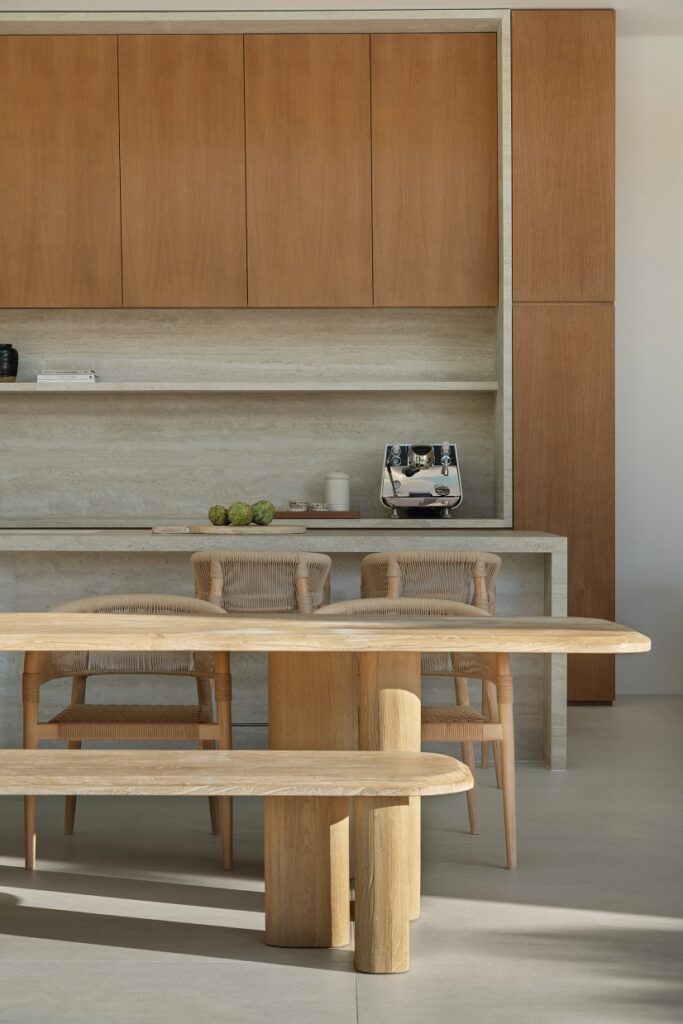
“By placing it in a key location, it becomes both a visual and symbolic focal point, reinforcing the home’s connection between nature and culture.” As the designer reflects on the atmosphere of the villa, she imagines it with a soundtrack that perfectly complements its serene and introspective ambiance. “If this home had a soundtrack, it would play Comptine d’un autre été: l’après-midi by Yann Tiersen”, she shares.
The piece’s delicate piano notes echo the villa’s tranquil design, where every element, from the materials to the lighting, creates a space that feels both timeless and intimate, inviting its inhabitants to experience a quiet yet profound connection to the space, nature, and culture.
